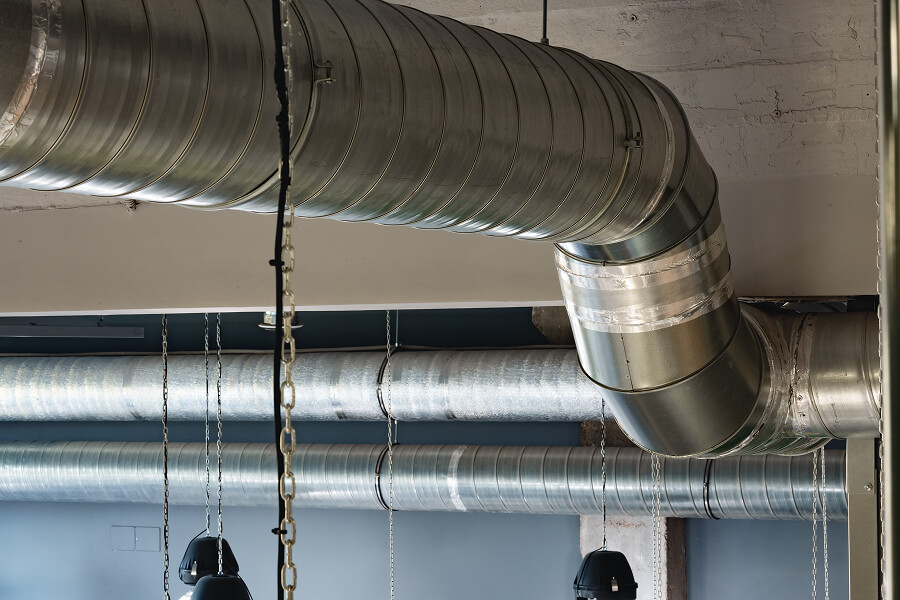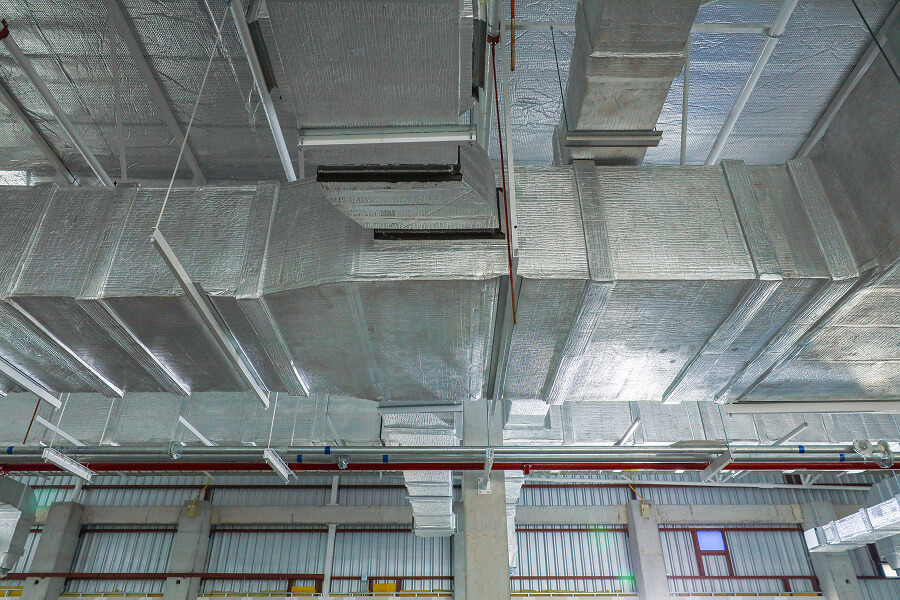In HVAC duct design, size is important, but it isn’t the only thing that matters—shape plays a major role in a system’s airflow performance, efficiency, and noise levels. Round, rectangular, and oval ducts all serve the same purpose—delivering air—but they each do it in very different ways.
So, as you might expect, it is important for any HVAC student to have a basic understanding of how duct shape affects airflow and when one shape should be chosen over another. In this post, we’ll break down the key differences between round, rectangular, and oval ductwork, and why those differences matter in real-world HVAC systems.
Round Ducts: The Most Efficient Duct Shape
Round ducts are the gold standard for airflow efficiency. Why? Because air moves more easily through a circular space. Here's why this is the case:
- Lower pressure loss: Air flows more smoothly in a round shape, thus reducing resistance and static pressure.
- Less surface area: Compared to a rectangular duct carrying the same volume, a round duct has less surface area. This means the air will have less friction and lower heat loss.
- Lower noise levels: Round ducts don’t have flat sides that can vibrate or create turbulence, and this helps keep noise down.
Use Case for Round Ducts
Round ducts are ideal for main trunk lines in open ceilings, rooftop units, or exposed designs (like in commercial spaces or modern homes). They’re also great for high-velocity systems where smooth airflow is critical.
Round Duct Limitations
- Round duct is not space-efficient in tight ceilings or wall cavities
- Round duct is harder to stack or align flush with flat surfaces
- Round duct may require special fittings and hangers
Rectangular Ducts: The Space-Saving Workhorse
While round ducts might be more efficient, rectangular ducts are often a more popular choice simply because they’re easier to fit into buildings—especially when space is tight. This is because rectangular duct has the following attributes:
- Space flexibility: They can be custom-sized to fit narrow spaces above ceilings or between wall studs.
- Stackable and flat-sided: Easier to insulate and install flush against surfaces.
- Easy custom fabrication: Most sheet metal shops are set up to easily fabricate rectangular ductwork to exact sizes.
Potential Drawbacks of Rectangular Duct
- Higher pressure loss: Sharp corners create turbulence and friction, which increases static pressure.
- Noisier: The flat surfaces of the rectangular duct can vibrate or pop with pressure changes.
- More prone to leakage: Rectangular duct has more seams and joints, and this means there will be more places for air to escape if not sealed properly.
Use Case for Rectangular Ducts
Rectangular ducts are most commonly used in commercial buildings, office drop ceilings, and tight residential spaces where a round duct simply won’t fit.
Oval Ducts: The Middle Ground
Oval ducts combine the performance of round ducts with the space efficiency of rectangular ones. Think of them as "flattened round" ducts. This style of duct offers benefits from both worlds, such as:
- Better airflow than rectangular: While not as efficient as perfectly round ducts, oval ducts still offer smoother airflow than rectangular duct’s sharp corners.
- Lower profile: Oval ducts can fit in shallower spaces without sacrificing very much in performance.
- Aesthetically pleasing: Oval ducts are often used in visible or architectural applications due to their clean, modern look.

Potential Drawbacks of Oval Ducts
- More expensive: Oval duct’s custom fittings and fabrication can drive up costs.
- Limited availability: Not all suppliers or shops can produce oval ducts easily.
- Trickier installation: Oval duct requires specific hangers and accessories, which can make installations more challenging.
Use Case for Oval Ducts
Oval ducts are ideal in architectural spaces where appearance matters, or in retrofitted buildings where headroom is limited but performance is still a priority.
Comparing Airflow Efficiency
Here’s a simplified breakdown of how airflow typically compares between the three shapes (assuming equal airflow volume):
Round: High airflow efficiency, low pressure loss, low noise potential
Rectangular: Medium to low airflow efficiency, high pressure loss, high noise potential
Oval: Medium airflow efficiency, medium pressure loss, medium noise potential
Which Shape of Duct Should You Choose?
There’s no one-size-fits-all answer because each project’s needs ultimately depend on the space, budget, and system goals. That said, here’s a quick cheat sheet:
- Use round ducts when performance and energy efficiency are the top priorities.
- Use rectangular ducts when you’re dealing with space constraints or need a custom fit.
- Use oval ducts when you want a balance of both—and are willing to invest a bit more.
Boost Your Duct Design and Fabrication Skills at BTrained’s Weekend Workshop
As an HVAC student or technician, understanding the impact of duct shape on airflow will help you design, fabricate, and install better systems. Choosing the right shape is step number one if you want to lower energy costs, reduce noise complaints, and improve comfort for the end user.
Enrolling in BTrained’s Duct Design and Fabrication Workshop is one of the best things you can do if you want to improve your skills working with ducts. At BTrained, we provide you with a more personalized learning experience and all the hands-on practice you need to be the best tech you can be..
Our intensive workshops in Birmingham, and Huntsville, Alabama are purposely kept small and only take one weekend to complete. As a result, it’s important for you to claim your spot early and enroll today. Or, visit us online at btrained.net to see all our upcoming training courses and workshops and just select the one that best fits your schedule.


